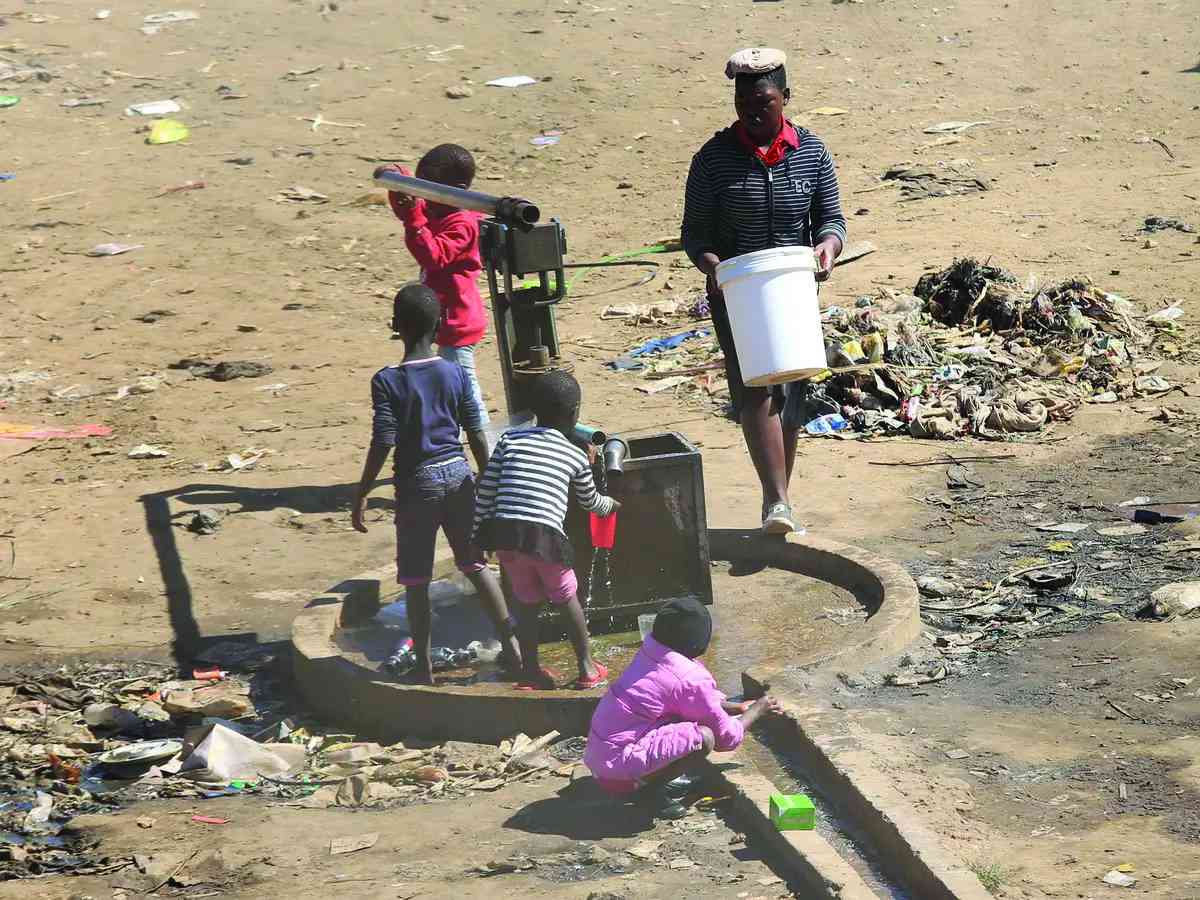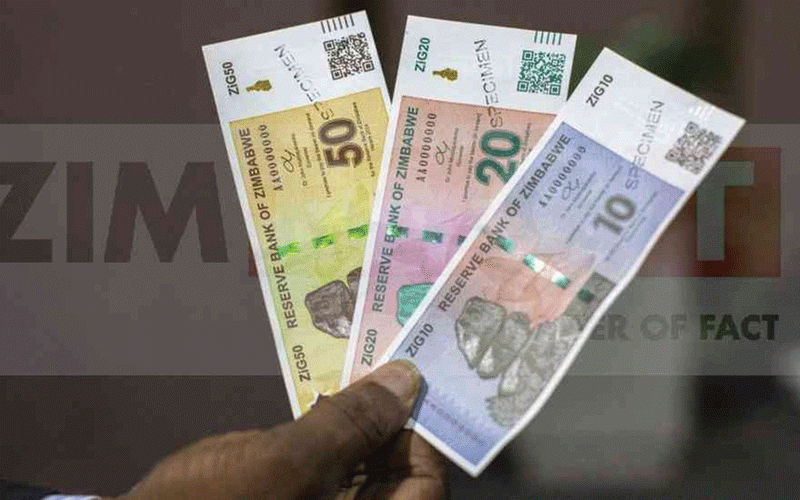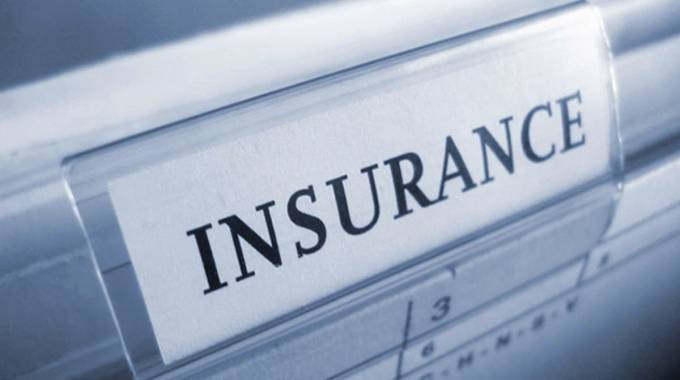
THE Public Debt Management Office (PDMO) published the 2023 Public Debt Report (PDR) that accompanied the 2024 National Budget Statement.
The PDR is published in compliance with Section 300 of the Constitution of Zimbabwe and Section 36 of the Public Debt Management (PDM) Act (Chapter 22:21).
This report details the performance of loans raised by the State and loans guaranteed by the State. As such, the Zimbabwe Coalition on Debt and Development (Zimcodd) seeks to analyse the 2023 PDR to decode the key messages from this report, which will help gauge the impact of the country’s high indebtedness on the economy in general and citizens in particular.
The analysis will also proffer alternative solutions to the debt problem.
Public debt stock
The Public Debt Management Office (PDMO) revealed that total public and publicly guaranteed (PPG) debt was marginally up by 0,6%, in annual terms, to US$17,7 billion as of the end of September 2023 from US$17,6 billion as of the end of September 2022.
Of the September 2023 total PPG debt stock, 72% (US$12,7 billion) was contracted externally, while 28% (US$5 billion) was contracted from the domestic market.
The external PPG debt comprises bilateral debt (US$6 billion), multilateral debt (US$3,1 billion), and Reserve Bank of Zimbabwe (RBZ) debt (US$3,6 billion).
- The strange tale of China's loans to Zimbabwe
- ‘Govt pampering looters with tax breaks’
- 5 more UZ students arrested
- Child marriage cases spike
Keep Reading
In the same vein, the total domestic PPG debt consists of compensation to Former Farm Owners (FFOs) (69,7%), government securities (29,2%), and arrears to service providers (1,1%).
Further analysis shows that the September 2023 total debt stock is 1,8% lower than the US$18,02 billion recorded in December 2022. This decline is mainly attributable to a decrease in external debt due to the Treasury's takeover of US$684,8 million liabilities on the Reserve Bank of Zimbabwe (RBZ) balance sheet.
Debt drivers
The granular analysis of the public debt report shows that the primary drivers of public debt in Zimbabwe are arrears and penalties on existing debts.
Of the US$12,7 billion total external PPG debt, principal arrears (PRA), interest arrears (IRA), and penalties (PEN) alone constitute 54,9% (US$6,98 billion).
From another angle, of the combined bilateral and multilateral debt amounting to US$9,1 billion, about 76% (US$7 billion) are PRA, IRA, and PEN.
The penalty interest rate charged by creditors is exorbitant; for instance, the highest penalty rate for bilateral creditors is 12,2%, while the highest penalty rate for multilateral creditors is 10,5%.
The debt default of the early 2000s, coupled with a shrinking economy, has attracted prohibitive penalties and subdued the capacity to service debts, thus trapping Zimbabwe in a debt overhang position.
Also, due to these high debt arrears, access to concessionary loan finance has been blocked.
As such, predatory creditors are taking advantage of Zimbabwe’s debt crisis by fuelling debt expansion - mortgaging natural resources and mineral revenues.
In addition, the public debt report also shows that debt stock is driven by government debt guarantees, particularly in agriculture.
For example, as of the end of September 2023, non-performing guarantees (NPGs) totalled US$198,01 million and ZW$3,1 trillion (US$567 million).
About 98,4% of these NPGs supported farmers, with some loans having recovery rates as low as 20%.
The fact that taxpayers end up assuming NPGs they have never benefited from, as most beneficiaries are the ruling class and their connected few, has created a moral hazard, leading to more debt accumulation.
Key messages
The following were the key findings from the 2023 debt report and their implications on the general macroeconomic environment, sustainability of business enterprises, and welfare of taxpayers, consumers, and citizens.
A moral hazard is a situation where an economic actor is incentivised to increase its exposure to risk because it does not bear the total costs of that risk.
Unsustainable debt
Public debt is sustainable if the government can meet all its current and future obligations without exceptional financial assistance or going into default.
The 2023 debt report showed that Zimbabwe’s debt remains unsustainable as it consumes over 90% of the estimated 2023 national output (GDP).
This debt level violates the Public Debt Management (PDM) Act, which stipulates a debt-to-GDP threshold of 70%.
Since a debt-to-GDP ratio shows a country’s capacity to repay its debts, a high ratio indicates that public debt is growing faster than national income.
Thus, the country will have a low capacity to repay accumulated debt, a case for Zimbabwe, where about 74% and 81% of bilateral and multilateral debt are interest and principal arrears and penalties, respectively.
This could indicate increased debt default risk for Zimbabwe — the probability that a borrower will not make the required payments on a debt obligation.
In such instances, creditors may be deterred from lending money altogether or are more inclined to seek higher interest rates when lending.
Mortgaging of minerals
Due to high indebtedness, Zimbabwe now relies on resource-backed loans (RBLs) —loans where repayment is made directly in natural resources or a resource-related income stream guarantees repayment.
For instance, the debt report shows that the government, in February 2023, secured a US$400 million loan from Afreximbank for budget support and the financing of trade-related infrastructure.
The US$400 million Afreximbank loan is repaid using 35% of Zimplats’ export proceeds of platinum in another case, in 2022, the Treasury revealed that Zimbabwe borrowed US$200 million from China, a loan secured by 26 million ounces of platinum reserves in Selous.
These RBLs are dangerous as they exert dire developmental impacts by fuelling corruption and unsustainable resource extraction, leading to environmental degradation, pollution (air and water), forced displacements of communities, farmer-miner conflicts, and human-wildlife conflicts.
The mining activities are not bringing tangible development to mining-host communities through corporate social responsibility (CSR), such as maintaining roads and constructing new schools and clinics.
In addition, the unsustainable extraction of natural resources is an injustice to future generations by depriving them of the value of nature, causing the benefits of nature to humanity to be distributed unequally across time. Hence, future generations will be less likely to experience wildlife and unable to reap nature's economic, ecological, and psychological benefits.
Exchange rate risk
The 2023 debt report shows that 72% of total PPG debt was accrued externally. As such, the bulk of the debt stock is denominated in foreign currency, which is stable relative to the domestic currency (ZWL).
The central bank on April 5 introduced a gold-backed currency, known as Zimbabwe Gold (ZiG).
For instance, in 2023 alone, the ZWL lost 88,8% and 92,5% of its value against the USD in the official and parallel markets, respectively.
The increased ZWL volatility means Zimbabwe will require more ZWLs to service its external debts. Hence, more resources will have to be provided for debt servicing through the National Budget, resources that would otherwise be used to provide crucial public services like housing, education, and healthcare. These public services are the gold bar for low-income families, particularly in rural, underserved, and marginalised communities.
Elevated interest rates
Zimbabwe is over-relying on domestic borrowing due to a lack of access to external credit markets, blocked by mounting arrears and penalties on running loan contracts. This competition for loanable funds between the government and the private sector, coupled with persisting inflation, is propping up market interest rates, thereby increasing the cost of debt financing.
For instance, of the ZW$802,5 billion domestic debt-related payments made by the Treasury between January 2023 and September 2023, interest payments constituted a staggering 37,3% of the total.
Furthermore, higher market interest rates are affecting consumers by reducing their disposable incomes, thus forcing them to cut back on spending.
In addition, the high cost of borrowing is subduing business investment, thus slowing productivity and reducing hiring. This helps explain Zimbabwe’s decades-long struggles with high formal unemployment and increased poverty.
Limited fiscal space
The 2023 debt report shows that Zimbabwe has a very limited fiscal space.
Due to rising arrears and penalties on existing external PPG debt, the nation can no longer easily access concessional credit terms to augment domestic resource.
The debt overhang has directly impacted capital inflows and led to a vicious debt cycle — continuous borrowing, accumulation of payment burden, and eventual default.
As alluded to earlier, defaults cause a borrowing country to lose access to global capital markets and suffer higher borrowing costs, harming growth and investment.
This case is bedevilling Zimbabwe as its prospective lenders, like the World Bank and African Development Bank, are unwilling to extend relatively cheap lines of credit.
Consequently, the Treasury has resorted to the over-taxation of economic agents, impoverishing citizens. High and regressive taxation affects many facets of the macroeconomy, such as aggregate consumer demand, industrial activity, savings and investment, and income distribution.
Public debt, 2024 National Budget
In the fourth quarter of 2023 (23Q4), the Treasury announced its 2024 National Budget proposals, with the spending ceiling for the year set at ZW$58,2 trillion (US$10 billion).
Total revenue collection is estimated at ZW$53,9 trillion (US$9,3 billion), comprising ZW$51,2 trillion (US$8,84 billion) in tax revenues and ZW$2,7 trillion (US$466 million) in non-tax revenues.
The budget has a financing gap of ZW$9,2 trillion US$1,9 billion), consisting of a budget deficit of ZW$4,3 trillion (US$746,3 million) and amortisation of loans and maturing government securities estimated at ZW$4,9 trillion US$846,1 million).
This huge financing gap laid bare the negative impacts of high indebtedness as the Treasury accumulates more debt and is set to spend more on debt servicing in 2024 (7,2%) than what is earmarked for social protection (4,1%).
As alluded to earlier, the mounting debt arrears and penalties, constituting more than 54% of total external PPG debt of US$12,7 billion, have closed Zimbabwe’s access to external concessionary credit lines. Consequently, the Treasury is over-relying on domestic borrowing, creating stiff competition for limited loanable funds, exerting pressure on market interest rates to upscale, and crowding out private sector investment.
This helps explain the prevalence of high unemployment in formal markets and increased poverty in Zimbabwe as the ever-rising production costs subdue overall business activity in the formal sector.
More so, authorities continue to pile additional regressive taxes to mobilise revenues to support developmental projects and programmes. The subsequent sections briefly comment on the implications of selected 2024 revenue mobilization policies.
Social protection programmes
The final 2024 budget failed to significantly increase budget votes for social protection programs, given the high prevalence of poverty and inequality in Zimbabwe.
Only 4,12% of approved budget funds were earmarked for flagship social protection programs like the Basic Education Assistance Module (BEAM), child protection services, and support for older people and persons with disabilities.
Informal traders and supply chains
The informal traders are now restricted from purchasing goods and services directly from manufacturers without possessing valid tax clearance certificates and value-added tax (VAT) registration.
Although the VAT registration threshold was reduced from US$40,000 to US$25 000, the amount remains beyond the reach of many informal traders and small businesses.
This policy move is detached from reality as the economy has primarily become informal, with about 70% of economic activity estimated to occur in the informal economy.
Also, this policy stance will significantly hurt local manufacturers as an influx of cheap imports will substitute local products.
Tax-free threshold
The Treasury reviewed the monthly tax-free threshold from ZW$500 000 (US$86) to ZW$750 000 (US$129,50). Although this will provide some relief to low-income earners, the tax-free amount is grossly inadequate given the context of persisting ZWL depreciation and ZWL inflation.
For instance, with market prices benchmarked at the parallel exchange rates, ZW$750 000 is equivalent to about US$50 using the end-January 2024 average parallel exchange rate of ZWL/USD 15 000.
This empirical evidence supports the notion that tax-free thresholds must be indexed to the poverty datum line, which is informed by the all-items consumer price index (CPI).
VAT Zero Ratings and Exemptions VAT zero ratings are now limited to exports, while VAT exemptions are only limited to selected goods like medicines and medical services. All other goods and services, including basics, are now standard-rated.
This policy is disproportionately affecting vulnerable members of society (the poor majority) who generally have a high marginal propensity to consume.
The levying of VAT has caused a significant increase in market prices of essential goods; hence, households are now spending more of their earnings on food (current consumption), leaving little for saving and investment (future consumption).
Covid-19 and cushioning allowance
The civil servants’ US$300 Covid-19 allowance has become part of the pensionable emoluments – salary component.
While this move has increased the real value of salaries for civil servants, it is now subjected to tax, further reducing disposable incomes for already lowly-paid government workers.
Strategic fuel reserve (SFR) levy
The SFR levy was increased by US$0,03 and US$0,05 per litre of diesel and petrol, respectively. The SFR adjustment, coupled with the Treasury’s move to increase toll gates and toll fees, has pushed fuel pump prices and, in turn, exerted enormous pressure on public transportation costs, significantly constraining commerce.
The policy stance has also ballooned the cost of doing business, increasing final goods' prices and subduing private-sector wage growth and hiring.
Conclusion
The 2023 Public Debt Report has shown that Zimbabwe’s external
debt distress is in distress, as arrears on principal and interest and penalties on payment default continue to mount.
Debt overhang is disastrous, especially given complex global challenges like climate change and deteriorating global geopolitics. If left unresolved, the debt crisis will permanently trap Zimbabwe into a vicious debt trap of continuous borrowing, accumulation of arrears, and subsequent defaults.
The sustenance of high indebtedness constrains development through limited access to concessionary funding, currency devaluations, rising cost of money (interest rates), and sluggish economic growth.
So Zimbabwe faces an impossible choice between serving its people or servicing mounting debts.
Recommendations
Authorities must explore revenue mobilisation strategies that do not disproportionately increase the tax burden and are non-inflationary. These include strengthening value chains and beneficiation and curbing resource leakages from corruption and illicit financial flows.
An adequate political will is needed to bolster government commitment to engage with creditors and the international community. Continue the structured dialogue with key stakeholders, including official creditors and the international community. The dialogue must be buttressed by real action, that is, swift implementation of targeted economic, governance, and land-related reforms.
Adhere to the dictates of existing debt legal frameworks, including the Constitution, the Public Debt Management Act, and Statutory Instruments (SIs) like the SI 108-2023, which directed all State loans to be contracted only through the Treasury.
Treasury must set a limit on all public borrowing and prescribe and adhere to these borrowing limits to contain debt accumulation, as held by the High Court in a matter between Zimcodd and the Minister of Finance.
It is imperative always to identify sources of financing that offer favourable financing terms to ensure that debt servicing costs are kept minimal.
To suppress rising default risk, the Treasury must undertake a thorough credit assessment before the approval of borrowing by all tiers of government to ensure the performance of the contracted debt.
Undertaking post-disbursement monitoring reduces the risk of falling further into debt distress and judiciously promotes the effective use of borrowed resources.
Debt servicing must not always take centre stage, but authorities must prioritise public services and social safety nets to reduce widening inequalities and poverty.
- Zimcodd is a socio-economic justice coalition established in February 2000 to facilitate citizens’ involvement in making public policy more pro-people.











